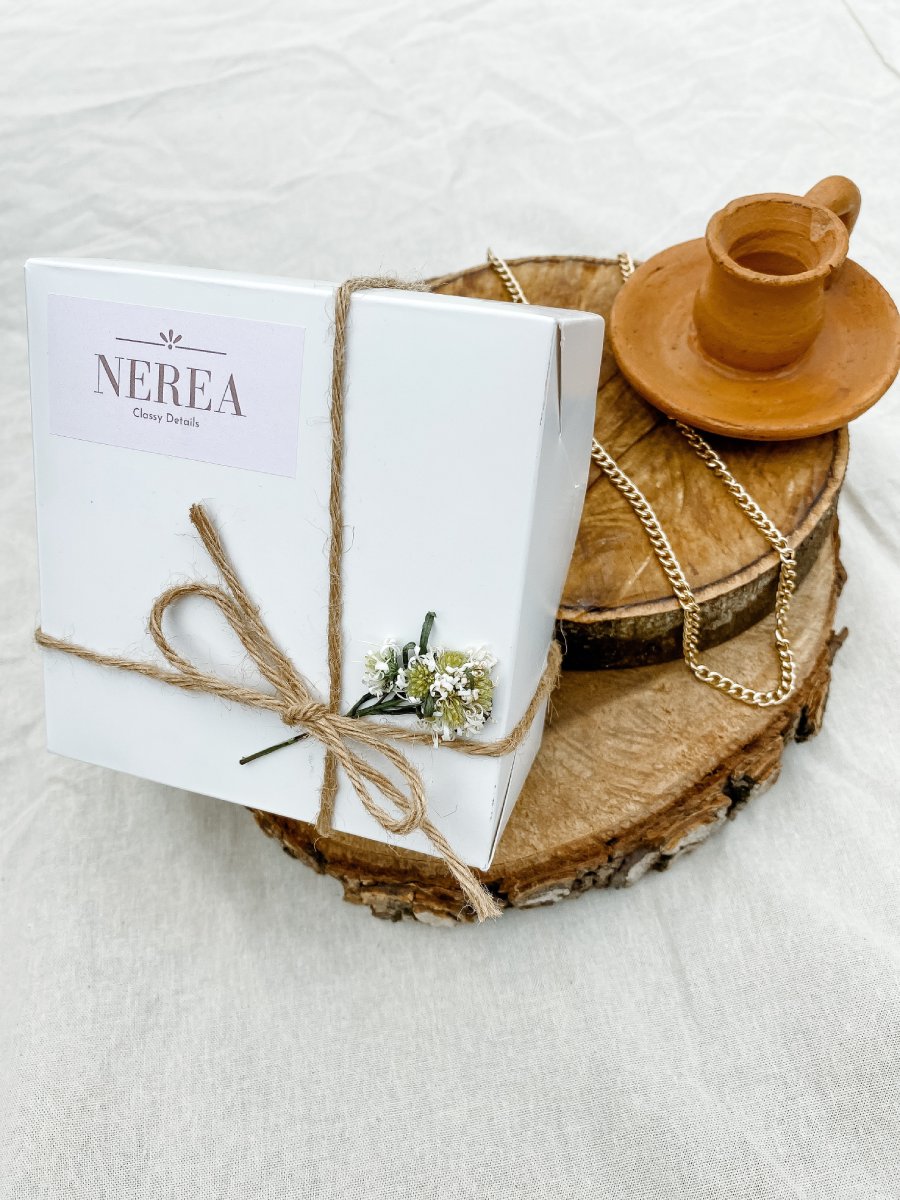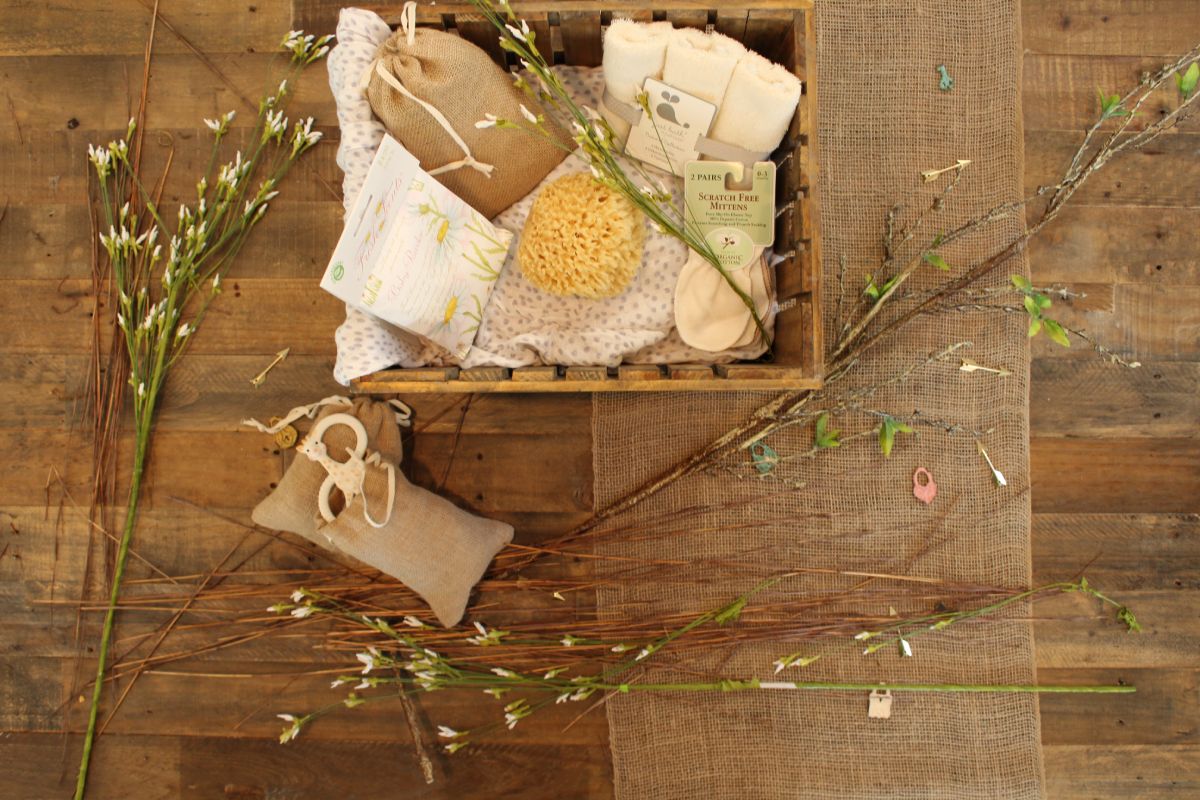Introduction
The holiday season is a time of joy and celebration, a chance for families and friends to gather and exchange gifts that signify their love and appreciation for one another. It is an opportunity for us to reflect on the passing year and look forward to a hopeful future. However, as the festive cheer fills our hearts, it is essential to recognize the impact our holiday habits can have on the environment.
The Importance of Sustainability During the Holiday Season
As we deck the halls with bountiful decorations and prepare the feasts that bring everyone together, it is vital to understand that these actions, albeit joyous, can often lead to excess waste, overconsumption, and an increased carbon footprint. The holiday season, while filled with happiness and love, is also the period where we generate a significant amount of waste, much of which ends up in landfills or the ocean.
Take, for example, the wrapping paper used to cover gifts. Each year, we use an astonishing amount of paper that often can’t be recycled due to glitter, plastic laminate, or tape. Similarly, consider the enormous energy consumption from festive lighting or the carbon emissions from holiday travel.
By adopting a sustainable mindset, we can alter our actions to reduce this detrimental impact. It doesn’t mean putting a damper on the festive spirit but finding a balance where our celebrations also respect and care for the environment.
Why Sustainable Gift-Giving Matters
One of the significant aspects of our holiday activities that we can make more sustainable is gift-giving. Gift-giving is a way to express our feelings, to show our loved ones that we care, and to participate in the time-honored tradition of giving during the holiday season. However, the consumerism associated with holiday gift-giving often leads to overproduction, waste, and harm to the environment.
Choosing sustainable gifts means selecting items that are made responsibly, often from recycled or renewable materials, and are designed to last. These gifts can also encourage others to adopt sustainable practices. Moreover, sustainable gifts can also be experiences, donations, or even home-made goods, all of which reduce the environmental footprint.
Incorporating sustainability into our gift-giving practices allows us to continue expressing our love and gratitude without causing harm to the environment. It’s a gesture that says, “I care about you, and I also care about the world we live in.”
Overview of the Guide
In this guide, we will explore numerous ways you can make your gift-giving more sustainable, from choosing eco-friendly gifts to using recyclable wrapping paper, to considering alternative gift options such as experiences or charitable donations. We’ll also delve into some great gift ideas that not only delight the recipient but also make a positive impact on the environment.
With these strategies, we hope to help you make your holiday season a little greener, creating a joyful time that respects our planet. This sustainable gift-giving guide provides a roadmap to a holiday season that marries tradition with conservation, festive joy with environmental responsibility.
By incorporating sustainability into our holiday traditions, we can make a difference. A sustainable holiday season is not only possible, but it also brings a new level of thoughtfulness and care to our celebrations.
Let’s embark on this journey of sustainable gift-giving together, creating a future where the holiday season is synonymous with caring for our earth.
Understanding Sustainable Gifts
Sustainability has become a critical aspect of our lives, permeating into various sectors such as fashion, food, and transportation. Gift-giving is another area where we can apply the principles of sustainability, making choices that are better for the planet, better for the people involved in the production of the gifts, and more meaningful for the recipients. Let’s delve deeper into understanding what sustainable gifts are and why they matter.

What Makes a Gift Sustainable
A sustainable gift can be defined through various factors. First, it is usually made from recycled, upcycled, or renewable materials, reducing the need for new resources. Second, a sustainable gift often involves fair trade and ethical labor practices, ensuring that those involved in its production are treated well and paid fairly. Finally, it’s typically designed to last, encouraging long-term use instead of disposal.
In other words, a sustainable gift not only considers its environmental impact but also the social and economic dimensions of its production and use. It’s a gift that respects the earth, values human dignity, and promotes responsible consumption.
Environmental Impact of Traditional Gifts
To understand the importance of sustainable gifts, we need to recognize the environmental impact of traditional gifts. Regular gift items, especially those mass-produced, often involve practices harmful to the environment.
Consider plastic toys, for example. They are made from non-renewable petroleum, require significant energy to manufacture, and can take centuries to degrade, often breaking down into harmful microplastics. The same goes for electronic gadgets that often contain toxic substances and contribute to e-waste.
Even the production of seemingly benign items like clothing or beauty products can involve pollution-heavy processes and use materials sourced unsustainably. Traditional gifts, while bringing joy in the short term, can have long-lasting negative impacts on our planet.
Ethical Considerations
Beyond the environmental impact, traditional gift production can also involve unethical practices. Low-wage labor, child labor, unsafe working conditions, and exploitation are prevalent in many industries that produce popular gift items. By choosing such gifts, we might inadvertently support these unfair practices.
On the other hand, sustainable gifts often come from brands and businesses committed to fair trade and ethical labor practices. They ensure that workers involved in the production are paid fair wages, work in safe conditions, and are treated with respect.
Choosing sustainable gifts thus aligns our gift-giving with our values, allowing us to express our care not just for the recipient but also for the people involved in the gift’s production and the planet at large.
In the following sections, we’ll explore various options for sustainable gifts, tips for identifying them, and ideas for making your own. Remember, every sustainable gift you choose makes a difference, reducing harm to our planet and promoting fair and ethical practices. It’s a small step you can take to make the holiday season a little brighter, not just for your loved ones but also for our world.
Benefits of Sustainable Gift-Giving
Embracing sustainability in our gift-giving traditions offers numerous benefits, from reducing environmental impact to supporting ethical business practices and creating a more meaningful connection with our loved ones. Let’s explore these benefits in more detail to better understand why sustainable gift-giving is a practice worth adopting.

Environmental Benefits
Choosing sustainable gifts is a powerful way to help conserve our planet’s resources and reduce pollution. When we select items made from recycled, upcycled, or renewable materials, we minimize the demand for new resources and thus decrease the strain on our environment.
Consider a gift made from recycled glass, for example. By choosing this over a similar item made from new materials, you save energy and raw materials that would otherwise be used in its production. The same applies to gifts made from organic cotton or sustainably harvested wood.
Furthermore, sustainable gifts often involve less packaging or use packaging made from recycled or easily recyclable materials. This significantly reduces waste and the demand for new paper and plastic production.
Social and Economic Benefits
Choosing sustainable gifts also has social and economic benefits. By purchasing from companies that engage in fair trade and ethical labor practices, we support a more equitable global economy. These companies provide fair wages and safe working conditions, contributing to better living standards and stronger communities.
Moreover, many sustainable gift options come from small, local businesses. By choosing these gifts, we support local economies and contribute to job creation in our communities.
Personal Benefits
Finally, sustainable gift-giving also offers personal benefits. The act of choosing a sustainable gift involves more thought and consideration than simply picking up a mass-produced item. This can make the gift-giving experience more rewarding and meaningful.
Moreover, sustainable gifts often have unique stories behind them. They may be handmade by artisans in a fair trade cooperative, or made from materials that have been creatively upcycled. Sharing these stories with the gift recipients can add a layer of significance and appreciation to the gifts.
Furthermore, by choosing sustainable gifts, we align our actions with our values, which can bring a sense of satisfaction and peace of mind. We are not only expressing love for our friends and family but also showing respect for the planet and the people involved in the production of the gifts.
Sustainable gift-giving is about more than just the items we give. It’s about the message we send, the values we uphold, and the kind of world we want to create. The environmental, social, and personal benefits are all interconnected, reflecting the holistic nature of sustainability itself. As we navigate the upcoming holiday season and beyond, let’s carry this spirit of sustainability into our gift-giving traditions.
Tips for Choosing Sustainable Gifts
Choosing sustainable gifts doesn’t have to be a daunting task. Armed with a little knowledge and intent, it’s possible to find gifts that are thoughtful, meaningful, and eco-friendly. Here, we’re offering some helpful tips on what to look for when choosing sustainable gifts.

Looking for Eco-Friendly Materials
When shopping for gifts, the materials used in the product is a crucial element to consider. Look for gifts made from eco-friendly materials such as organic cotton, bamboo, recycled metal, or reclaimed wood. Materials like these have a significantly lower environmental impact compared to their conventional counterparts.
Products made from recycled or upcycled materials are excellent choices. Not only do these reduce waste by making use of items that would otherwise end up in landfill, but they also require less energy and resources to produce compared to new items.
Checking the Brand’s Sustainability Credentials
Before purchasing a gift, it’s worth taking a moment to research the brand’s sustainability credentials. Look for companies that are transparent about their manufacturing processes and are committed to sustainable practices. This can include anything from using renewable energy in their facilities to having a zero-waste policy.
Many brands now use certification schemes to highlight their commitment to sustainability. Certifications to look for can include Fairtrade, Rainforest Alliance, or Global Organic Textile Standard (GOTS), among others.
Choosing Practical and Long-Lasting Gifts
Another key aspect of sustainable gift-giving is choosing items that are practical and will stand the test of time. Gifts that get used regularly are much better for the environment than those that are soon forgotten or quickly end up in the trash.
Consider the quality of the gift you’re buying. Is it durable? Will it last? High-quality items may cost a bit more upfront, but they often last longer, providing more value over time and reducing their overall environmental impact.
Additionally, consider the potential for the gift to be reused or passed on once its original use is complete. Gifts with a second-life potential are a wonderful way to promote sustainability.
In summary, choosing sustainable gifts is about considering more than just the item itself. It’s about thinking about the materials it’s made from, the processes and ethics of the company that made it, and the longevity of the gift. With these tips in mind, you’re well on your way to making your gift-giving more sustainable and impactful.
Supporting Sustainable Businesses
An integral part of sustainable gift-giving is choosing to support sustainable businesses. These are companies that take steps to minimize their environmental footprint and often contribute positively to their communities. Supporting them can be a powerful way to promote sustainability, even while purchasing gifts.

Why it’s Important to Support Sustainable Brands
Supporting sustainable brands is a significant step towards a more sustainable economy. These businesses often lead the way in innovative, eco-friendly practices, demonstrating that it’s possible to be both profitable and sustainable. They are paving the way for other businesses to follow suit, thereby helping to shape a more sustainable future.
Sustainable businesses often consider the full lifecycle of their products - from sourcing raw materials ethically and sustainably, through to manufacturing processes that minimize waste, energy usage, and emissions. Furthermore, these businesses often have social responsibility programs, fair trade practices, and positive workplace policies in place.
By choosing to support sustainable brands, you’re voting with your wallet for the kind of world you want to live in - one where businesses care about their impact and take responsibility for their actions.
Tips on Finding Sustainable Businesses
Finding sustainable businesses to support may seem like a challenge, but there are several resources available to help. Look for online directories of eco-friendly companies, read blogs and magazines that focus on sustainability, and follow influencers who promote sustainable brands.
When assessing a business’s sustainability, consider their transparency. Do they openly share their practices, goals, and progress? This is often a sign of a company genuinely committed to sustainability.
Also, look at the company’s product range. Do they offer high-quality, durable goods? Do they use eco-friendly materials and processes? Are their products designed to be recyclable or biodegradable at the end of their life?
Examples of Sustainable Brands for Gift Shopping
There are many sustainable brands out there offering a wide range of products perfect for gift-giving. Here are a few examples:
-
Patagonia: Known for their durable outdoor clothing and gear, Patagonia is committed to responsible business practices, fair labor, and environmental activism.
-
Bambaw: Bambaw offers a range of zero-waste lifestyle products, from bamboo toothbrushes to reusable straws and cutlery.
-
Veja: Veja is a sustainable shoe brand that uses organic and fair-trade materials and transparent supply chains.
-
Etsy: While not a brand itself, Etsy is a marketplace for handmade and vintage items, many of which are made sustainably. You can find a wide variety of unique gifts from artisans around the world.
In conclusion, supporting sustainable businesses when shopping for gifts is a powerful way to contribute to a more sustainable world. By considering the sustainability practices of the brands we support, we can all play a part in driving change in the business world.
DIY Gifts: A Sustainable Alternative
An excellent way to make your gift-giving more sustainable is to create your own gifts. Do-it-yourself (DIY) gifts can reduce waste, save money, and add a personal touch that your loved ones are sure to appreciate.

Advantages of DIY Gifts
DIY gifts have several advantages that make them a sustainable choice for holiday gift-giving. First, they eliminate the need for mass-produced items, which often come with significant environmental costs due to production, packaging, and transportation.
Moreover, you can control what materials you use and strive to select those with low environmental impacts, such as recycled, upcycled, or sustainably sourced items. Also, the ability to repair, repurpose, or recycle a homemade gift at the end of its life adds to its sustainability.
Apart from their environmental benefits, DIY gifts also offer a personal touch. A homemade gift shows that you’ve spent time and effort, which often makes it more special and meaningful to the recipient.
Ideas for Sustainable DIY Gifts
The possibilities for DIY gifts are endless. Here are a few ideas that are both sustainable and likely to be appreciated:
-
Homemade candles: Using beeswax or soy wax, you can make eco-friendly candles scented with essential oils. These can be made in reusable jars and decorated for a personal touch.
-
Handmade soap or bath bombs: With natural ingredients like shea butter, essential oils, and oatmeal, you can make luxurious bath products that are kind to the skin and the planet.
-
Sewn or knitted items: If you have the skills, you could knit a cozy scarf, sew a tote bag, or even make reusable fabric gift wrap.
-
Homemade food: Jams, cookies, granola, or other treats made from scratch are always a hit. Use organic ingredients and package them in reusable jars or containers for added sustainability.
Tips for Sourcing Materials for DIY Gifts
When making DIY gifts, it’s crucial to consider where your materials come from. Here are some tips for sourcing sustainable materials:
-
Recycle or upcycle: Use what you have at home before buying new. Old fabric, jars, and even paper can be transformed into beautiful gifts.
-
Buy in bulk: If you need to buy, get materials in bulk to reduce packaging waste. Many craft stores offer bulk options.
-
Choose natural: Go for materials that are natural, organic, or sustainably sourced. Avoid synthetic materials that can be harmful to the environment.
-
Support local businesses: Purchase materials from local businesses, which not only supports your local economy but also reduces the carbon footprint associated with shipping.
In conclusion, DIY gifts offer a thoughtful, personal, and environmentally friendly alternative to traditional gift-giving. By choosing to make your own gifts, you’re not only potentially saving money, but also reducing your environmental impact, and giving a gift that carries a personal touch.
Sustainable Gift Wrapping Ideas
Apart from choosing sustainable gifts, it’s also crucial to consider the way we wrap them. Gift wrap can contribute significantly to holiday waste. However, with a bit of creativity and awareness, it’s possible to present your gifts beautifully without harming the planet.

Environmental Impact of Traditional Gift Wrap
Most traditional gift wrap is used once and then thrown away. What’s worse, much of it is not recyclable due to factors like glossy finishes, plastic components, or metallic foils. Combined, these issues mean that a significant amount of waste is generated each holiday season from gift wrap alone.
Furthermore, the production process of gift wrap involves the use of energy, water, and trees. Chemicals used to bleach and dye the paper can also cause environmental harm. In this context, seeking out sustainable alternatives becomes even more urgent.
Alternatives to Conventional Gift Wrapping
There are many environmentally-friendly alternatives to traditional gift wrap:
-
Fabric Wraps: Also known as Furoshiki, this Japanese art of fabric wrapping is a beautiful and reusable way to wrap gifts.
-
Brown Kraft Paper: This recyclable and compostable option can be dressed up with twine and stamps.
-
Newspaper: It’s a great way to repurpose something you already have, and it can look surprisingly chic.
-
Reusable Bags or Boxes: Consider using a gift bag or box that the recipient can continue to use.
-
Recycled Paper: If you can’t avoid using paper, opt for recycled versions.
DIY Sustainable Gift Wrap Ideas
In addition to the alternatives above, you can also get creative and make your own eco-friendly gift wrap:
-
Potato Print Kraft Paper: Use a potato cut into a shape to stamp designs onto brown Kraft paper. It’s fun, personal, and has a rustic charm.
-
Old Maps or Calendars: Instead of throwing out old maps or calendars, use them as unique and colorful gift wrap.
-
Jar or Tin Can: For smaller items, a cleaned jar or tin can make an attractive and reusable container.
-
Decorate with Natural Items: Rather than plastic bows or ribbons, decorate your gifts with twine, pinecones, dried fruit slices, or cinnamon sticks.
-
Homemade Fabric Gift Bags: If you’re handy with a sewing machine, you can create fabric bags that can be reused for years to come.
In conclusion, sustainable gift wrapping is all about reducing waste and reusing materials. Whether you choose to repurpose items you have at home or invest in reusable options like fabric wraps or bags, you’re making a positive impact on the environment. And the best part is, sustainable gift wrap not only helps the planet, it also adds a unique and personal touch to your gifts.
Reducing Waste During the Holiday Season
The holiday season is a time of joy and celebration, but it’s also a period that sees a significant surge in waste generation. This stems from the increase in consumption - be it food, gifts, or decorations. The good news is, with a little bit of planning and awareness, we can significantly reduce our waste footprint during the holidays.

The Issue of Waste Generation During the Holidays
The holiday season is often marked by an excess of everything - from food to presents, decorations, and packaging. In fact, it’s estimated that the amount of waste generated in many countries can increase by up to 25% during this period.
One of the significant contributors to holiday waste is food. Large holiday meals often result in a lot of leftovers, much of which ends up in the trash. Furthermore, gifts - especially those packaged with non-recyclable or non-compostable materials - also add to the waste problem.
Tips to Minimize Waste
There are several strategies you can adopt to minimize waste during the holidays:
-
Plan Your Meals: Be mindful of portion sizes and plan your meals to minimize leftovers. If you do have leftovers, store them properly and make a plan to use them in the days following your celebration.
-
Choose Gifts Mindfully: As we’ve already discussed, opt for sustainable gifts and consider experiences over physical gifts.
-
Recycle: Make sure to properly recycle any waste that you can’t avoid - like cardboard boxes or glass bottles.
-
Compost: If you have a compost pile, remember to add your food scraps (excluding meat and dairy) to it. Composting not only reduces the amount of waste going to the landfill but also returns valuable nutrients to the soil.
Sustainable Practices for Holiday Parties
When it comes to hosting holiday parties, consider these sustainable practices:
-
Use Real Dishware: Instead of disposable plates and cups, use real dishware. It may mean a bit more clean-up time, but it significantly reduces waste.
-
Decorate Sustainably: Opt for natural decorations like pinecones, branches, and reusable items instead of plastic ornaments and tinsel.
-
Avoid Single-Use Items: If you’re providing party favors, choose reusable items or gifts that your guests will genuinely use and appreciate.
-
Provide Recycling Bins: Make it easy for your guests to recycle by providing clearly labeled bins.
The holidays are a time for joy and celebration, but they also provide an excellent opportunity to be mindful of our consumption habits. By implementing these tips and sustainable practices, we can all contribute to a more sustainable holiday season.
Inspiring Others Towards Sustainability
Sustainability isn’t just about the choices we make as individuals - it’s also about inspiring and influencing others to make more eco-friendly decisions. One of the most effective ways to encourage sustainable habits is through personal example, particularly during the gift-giving season.

The Power of Leading by Example
Leading by example is a powerful way to demonstrate the importance and feasibility of living sustainably. When you choose to give sustainable gifts or wrap your presents with reusable materials, you are showing others that it’s possible to celebrate and exchange gifts without causing harm to the environment.
Your actions can send a strong message about your values and commitment to sustainability. They can stimulate conversations about why you’ve made these choices, giving you an opportunity to share your knowledge and passion for sustainability with others.
Discussing Sustainability with Loved Ones
While it’s crucial to lead by example, it’s also important to have open and honest conversations about sustainability with your friends and family. The holiday season is an excellent time to discuss these topics as it’s a period where waste is often at its highest.
Start by sharing why sustainability matters to you and how it benefits not just the environment, but also our health and quality of life. You could discuss the issue of waste during the holidays, the environmental impact of certain materials, or the benefits of supporting sustainable businesses.
Remember, the goal isn’t to guilt or shame anyone into being more sustainable - it’s to encourage understanding and inspire change.
How Your Choices Can Make a Difference
The choices you make, big or small, can have a significant impact. By choosing to give sustainable gifts, you’re not just reducing your environmental footprint - you’re also supporting sustainable businesses and the green economy.
Furthermore, your actions can influence those around you. Even if just one person decides to adopt more sustainable practices as a result of your influence, that’s a win. And if they, in turn, inspire others, the impact multiplies.
In conclusion, sustainability is about more than individual actions - it’s about community, education, and inspiring change. By choosing sustainable practices, particularly during the holiday season, we have the opportunity to lead by example, engage in meaningful conversations, and inspire others to embark on their own sustainability journey.
Conclusion
Sustainability, particularly in the realm of gift-giving, is not only about making environmentally friendly choices, but it’s also about making decisions that promote social and economic benefits. This article provided several tips and insights into sustainable gift-giving that can have profound effects on our planet and society.

Recap of Sustainable Gift-Giving Tips
We started by understanding what constitutes a sustainable gift and how the traditional ways of gifting have a significant environmental footprint. We then delved into the benefits of sustainable gift-giving, encompassing environmental, social, economic, and personal aspects. We explored how to choose sustainable gifts by focusing on eco-friendly materials, verifying a brand’s sustainability credentials, and opting for practical and long-lasting items.
We stressed the importance of supporting sustainable businesses, and for those with a creative knack, we presented DIY gifts as a viable and sustainable alternative. The topic of gift wrapping was not left out as we discussed its environmental impact and sustainable alternatives. We also shared ways to reduce waste during the holiday season, with emphasis on sustainable practices for holiday parties.
Importance of Sustainability During the Holidays
The holiday season, while a joyous time, often leads to a significant increase in waste and environmental degradation. Making sustainable choices during this period can substantially lessen that impact. From choosing gifts made of eco-friendly materials to reducing waste during holiday celebrations, every decision contributes to a more sustainable holiday season.
Encouraging Readers to Embrace Sustainable Gift-Giving
Finally, this guide is an appeal to you, the reader, to embrace sustainable gift-giving. You have the power to make a difference - not just through your own actions, but also by influencing the choices of those around you. The holiday season is a time for generosity and love, and what better way to express those feelings than through gifts that also show our love for the planet?
In conclusion, sustainability in gift-giving is an achievable goal. It’s about making conscious decisions that reflect our commitment to a better and healthier planet. As we’ve seen, it is entirely possible to enjoy the joyous tradition of holiday gift-giving without compromising our environment. The next step is yours to take.





